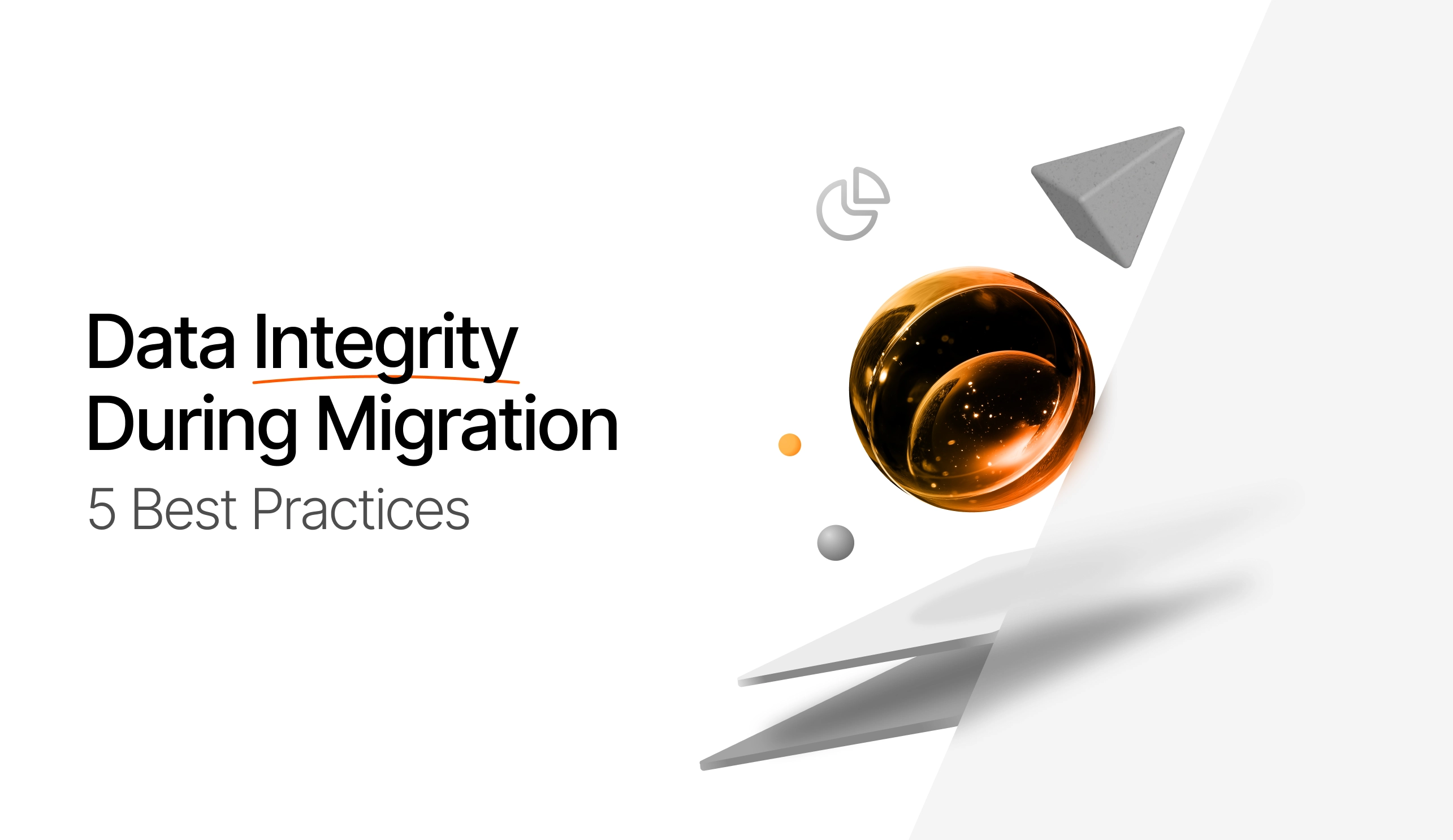In 2024, we witnessed the incredible growth of global spending on cloud infrastructure, which grew 19% and reached $78.2 billion. While most tech giants are shifting their investment focus to AI initiatives, cloud computing still ranks high and continues to occupy a leading position in investment matters.
According to Gartner forecasts, global end-user spending on public cloud services will reach USD 723.4 billion in 2025, a notable increase from USD 595.7 billion in 2024.
In the article, we will discuss how to make the transition to the cloud as painless as possible. What risks are encountered along the way, and how can they be avoided? We have collected the ten most likely risks a company will face when transitioning to the cloud in 2025. Let's get started.
Top 10 migration risks when moving to the cloud
Let's look at the most common risks associated with cloud migration and what to do about them.
Unclear cloud migration strategy
Proper planning is the foundation of your migration project. At the stage of discussing the future project, it is necessary to determine the key features of the migration. The organization must answer several questions:
- Will the migration be multi-cloud, or will the company rely on one cloud provider? The combination of AWS and Microsoft Azure is popular among corporations today. This solution leaves more freedom for cloud computing for 78% of organizations, according to a report by McAfee.
- What exactly will the company migrate to the cloud, and what will remain on-premise?
- A hybrid strategy? Careful planning is required here. Keep in mind that storing financial information or any confidential data in the public cloud is highly unacceptable (read insecure)
- GDPR standards do not allow healthcare and finance organizations to store sensitive information on public cloud platforms. Data critical to the company must be hosted on physical servers in a specific region.
Contact professionals to create an effective strategy without pitfalls and surprises during the migration process. The Ispirer team has extensive expertise in crafting cost-efficient and winning strategies. More than 20 years of experience in cloud migration allow experts to consider all sorts of database features to prevent difficulties.
Security and Compliance
Transferring data to the cloud can highlight vulnerabilities in the system and put confidential data at risk. That is why it is extremely important to consider whether cloud technology complies with modern privacy laws and regulations.
Different regulations regulate different areas. For example, if a company operates in the medical field, it will be regulated by GDPR and HIPAA. Since such a database will store confidential patient data, the company will need to ensure that the data transfer is safe and does not create risks of data leakage.

Costs Management
Companies often migrate to the cloud because it saves operational cloud costs in the long term. This is true because migrating to the cloud involves abandoning on-premises equipment and avoiding upfront investments associated with on-premise hardware. In addition, many cloud solutions involve a pay-as-you-go model, meaning companies only pay for what they use. However, it is worth remembering that the initial investment can be quite high.
Data migration loss
Migrating sensitive data is always a topic that makes company managers wake up at night in a cold sweat. Migrating data to the cloud is a responsible step, and even minimal errors can lead to serious consequences. Errors in migration protocols can threaten the loss of critical data, operational disruptions, and impressive recovery costs. The larger the database, the higher the likelihood of potential changes or damage to the data.
How can we avoid the risk of losing data? To be confident in data transfer, you should conduct regular data integrity checks before, during, and after migration. You can read more about data integrity in our blog.
Stringent data verification and error-detection methods should be utilized to mitigate risks during cloud migration and avoid data integration problems. Setting up robust backup systems is crucial to safeguarding data integrity.
Flawless integration is vital in hybrid cloud configurations, where some systems stay on-site while others transition to the cloud. To uphold data synchronization and integrity, guarantee secure, dependable connections between cloud and on-site systems. Efficient data management throughout the migration process aids in sustaining business operations and fully leveraging the advantages of cloud-based analytics and decision-making tools.
Downtime and service interruptions
Downtime can occur during the migration process due to errors in the migration strategy, system incompatibility, and unforeseen technical errors. Such errors can result in significant costs to the company, customer relationships, and reputational damage.
How do we avoid a considerable deadline?
- A thorough migration strategy. It is necessary to consider many factors, such as the size of the database, the correct definition of migration steps, and the timeline.
- Conducting testing to identify potential problems before starting the migration.
- Using a phased migration method to minimize migration problems.
- Migrating during off-peak hours to minimize disruption of business operations.
- Creating a rollback plan in case of serious migration problems.
Vendor Lock-In
Vendor lock-in is one reason companies do not move to the cloud. Cloud infrastructures make organizations addicted to their products, and companies often cannot abandon these solutions later. Such a situation can affect an organization's flexibility and prevent it from upgrading its own systems, changing cloud service providers, or returning to on-premise infrastructure.
This risk is quite challenging to avoid, but several recommendations will help minimize vendor lock-in:
- Use a multi-cloud or hybrid cloud migration strategy
- Back up your data regularly so that you can easily migrate to another database if necessary
- Design your cloud architecture with portability in mind from the very beginning
Skill gaps in cloud expertise
The skill set required for successful cloud management is different from that required for working with an on-premise database. If your team needs to gain the necessary knowledge and skills, be prepared because this may lead to security risks and efficient resource use. Organize and conduct training sessions so that your employees master the necessary skills and knowledge. Foster a culture of support between different IT teams. In addition, remember to reward your team for additional motivation.
Infrastructure compatibility
The challenge is that numerous legacy systems may not align with contemporary cloud solutions. This issue is particularly pertinent for companies employing a multi-cloud and hybrid cloud approach. Legacy systems, bespoke applications, and external software frequently lack cloud adaptability, resulting in dependency and compatibility challenges that make the migration process complex.
Companies need to carefully study their assets before starting the migration:
- Assessing the current infrastructure and software to pinpoint possible incompatibilities, dependencies, and complexities hindering the migration process.
- Deciding on the suitable migration strategy based on the evaluation outcomes. Each organization has distinct needs, workloads, and configurations, necessitating customized strategies like lift-and-shift, refactoring, or re-designing applications for the cloud.
Network Performance and connectivity
Cloud solutions rely heavily on network performance and connection capacity. Insufficient performance can degrade the performance of cloud products, especially those that must process data in real-time.
To avoid such problems, you need to improve your network and connection. The best recommendation is to implement a CDN. In addition, an effective solution is to place cloud servers as close as possible to end users, which will help reduce latency.
It's also vital to guarantee strong connectivity between cloud platforms and on-site systems for continuous data transfer and security. Assess your network's capacity and efficiency to avoid congestion and confirm that your infrastructure can handle the requirements of cloud-centric operations.
Data governance and management risks
Migrating to a public cloud always means losing complete control over your data. It's like first driving a car and then getting on an airplane. Concerns about cloud security replace complete control of driving.
To prevent security threats and reduce concerns, follow these recommendations:
- Reduce unauthorized access and accountability by limiting user access personally.
- Encryption is always a great idea. It gives you extra security for confidential data.
- Contracts with vendors should be analyzed and negotiated. Striking some favorable terms could help you reduce cloud vulnerability.
Migrate to the cloud with Ispirer
Approach a real guru in migration endeavor to make your cloud computing journey a fast and efficient move. With an automated approach using SQLWays Wizard, customers can be confident in migration to the most popular cloud providers, including AWS, Microsoft Azure, and Google Cloud. Here's why:
- Transparent pricing and cost-efficient offerings. The Ispirer experts utilize automated assessment to analyze your current database with Assessment Wizard to determine the migration strategy clearly and transparently.
- 24/7 technical support and comprehensive documentation. Every customer has a personal project manager and technical expert who accompanies them throughout the process.
- User-friendly interface. SQLWays Wizard boasts a user-friendly interface that helps you navigate through the migration process easily and gives you full control over it.
- Robust security. Ispirer deploys sophisticated security measures and protocols to shield your business from potential risks.
Conclusion
In this article, we have analyzed the most critical risks associated with cloud migration. This article will help you overcome all the risks and help you better determine your cloud migration strategy.
If you are ready to entrust your migration project to professionals, book a demo session with Ispirer experts. In 30 minutes, you will discuss all the details of the project and be able to decide on a suitable solution for migration.












